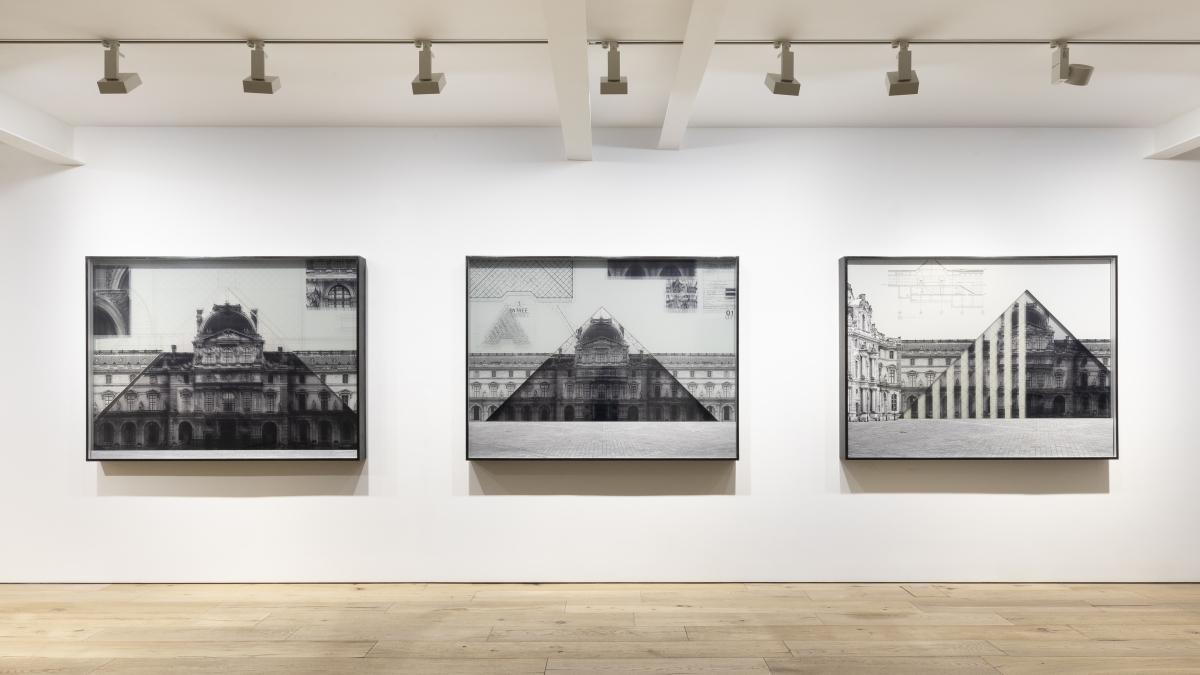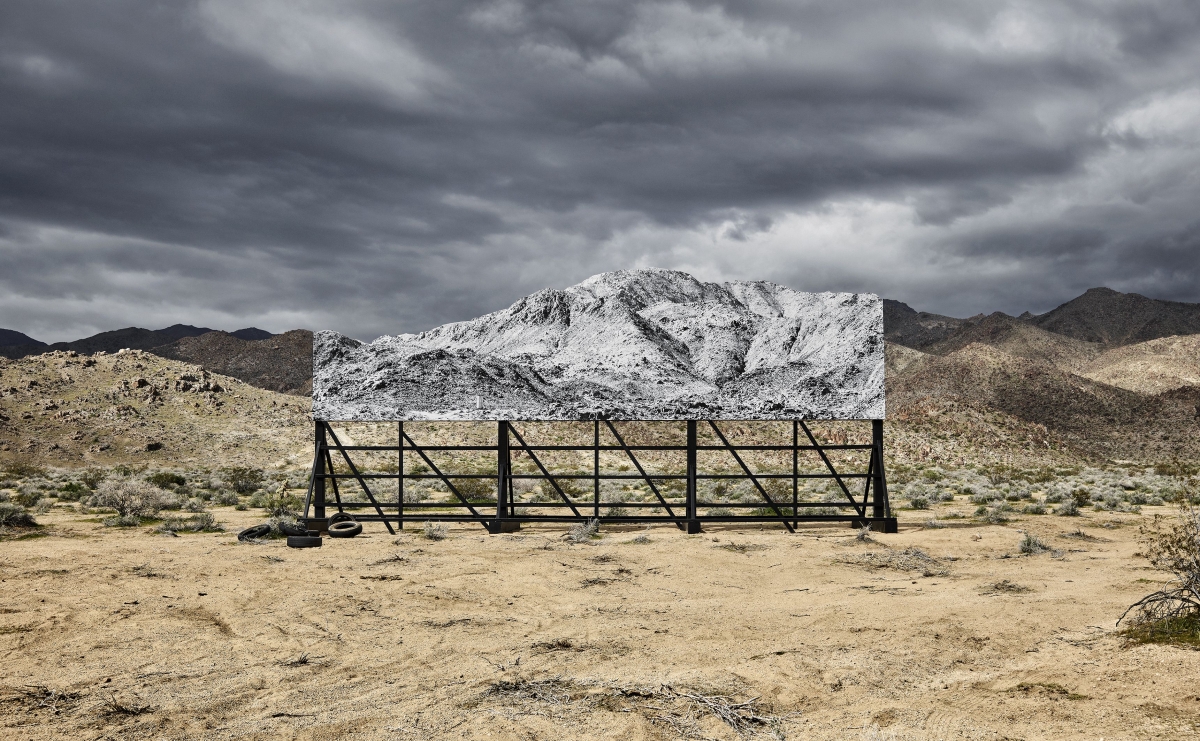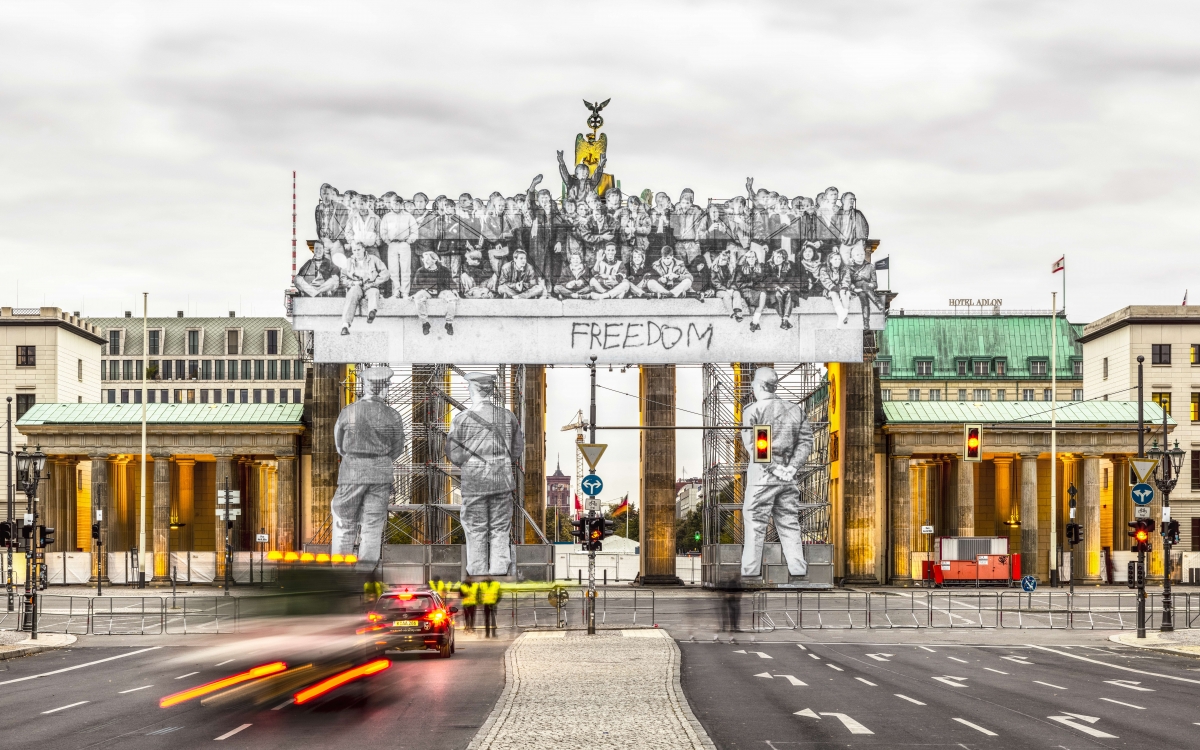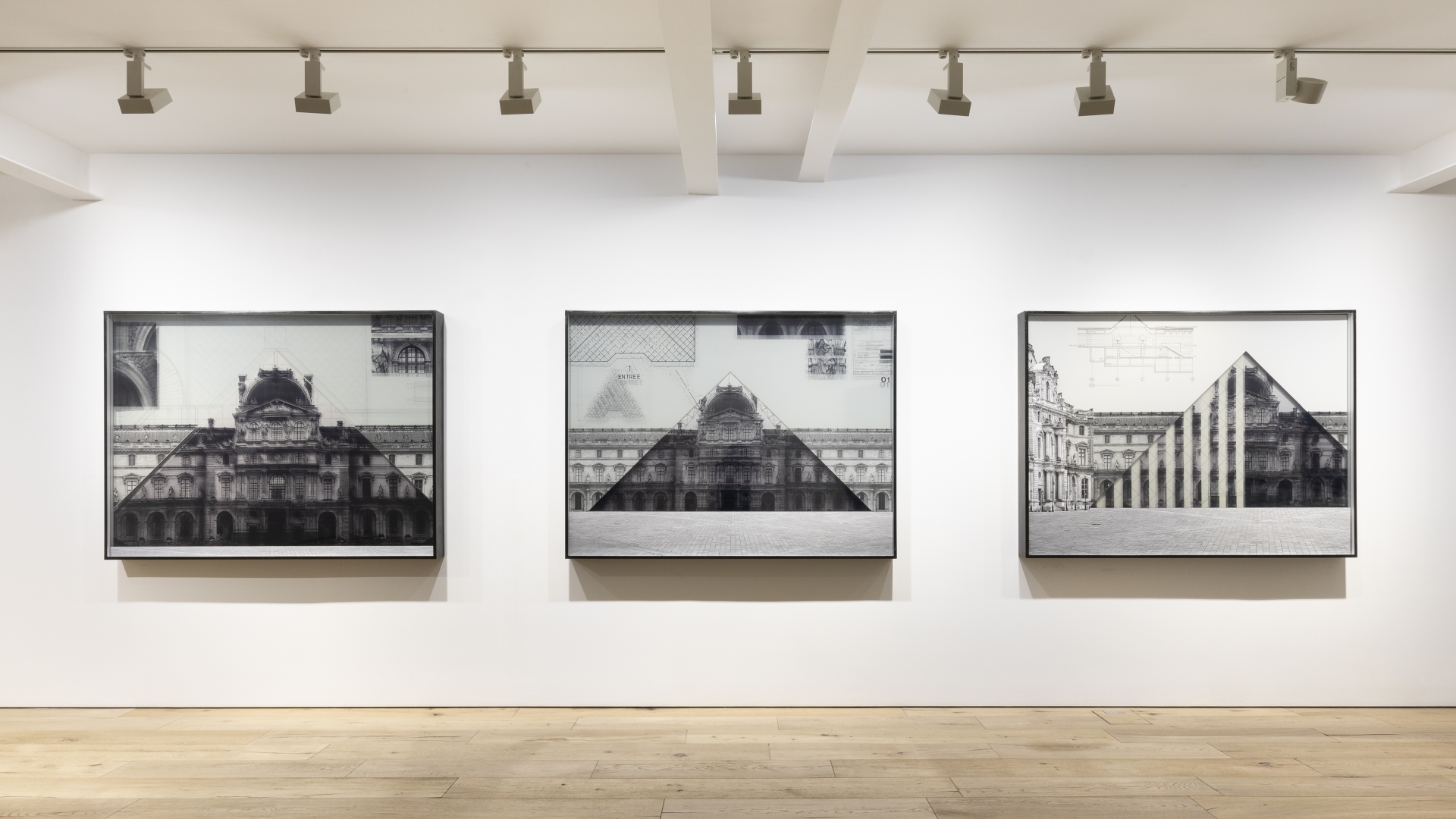‘Unveiling’
Perrotin Seoul
17 January – 9 March, 2019
May 2016, the enormous glass pyramid in the courtyard of the Louvre Museum, Paris, disappeared. More accurately, it was cunningly hidden as if it had disappeared. The Louvre museum’s invited artist, the photographer JR, had covered the entire façade of the pyramid with a black and white illusory display. Erecting monumental photo-collage work in urban and rural landscapes all over the world, JR sheds light on hidden terrains. The Seoul exhibition features eleven of his most recent site-specific works.

©Jo Youngha
Kim Geumyoung (Kim): I.M. Pei’s glass pyramid, created as the main entrance to the Louvre Museum in 1988, is the indisputable symbol of the museum. How did you come up with such a bold idea, that you could make it disappear?
JR: I was overjoyed to receive the proposal for the exhibition from the Louvre museum. I spent several days next to the pyramid trying to figure out what I could do with the project. I discovered many people taking selfies with their backs to the pyramid. So the project took shape around questions such as, ‘why did all these people travel so far, yet stand with their backs to the pyramid?’ I also thought, ‘what if I could make the pyramid disappear?’ These ideas were used in this project. It was possible to make the pyramid disappear entirely if one were to stand at a particular point facing the entrance. It was also fascinating to see how people would seek out the particular spot, lining up to take photos there. I also took some photos of people taking selfies in front of the pyramid.
Kim: This exhibition also features blueprints which give us insights into the realisation process of the Louvre project. Seeing the process is as interesting as seeing the results.
JR: If one only observes the results, it might look as if the project was simple, yet it was not an easy process at all. I made countless configurations of images by spreading out many different references, and I thought long and hard about where to cut and paste the images to create a complete illusion. I believe that the creation of art also includes the stages of figuring things out. It is also possible to discover the several discrete devices in the blueprints that featured in this exhibition. The photo of the Louvre museum, which was attached to the glass pyramid, had been very slightly manipulated. As such, careful observation of the photo will reveal that several of the sculptures in the building brandish paintbrushes and cleaning tools. While the illusionary effect was created using photos of the actual building, the work also contains several deviations from reality.
Kim: Why do you include such hidden elements, which would normally remain unnoticed without further explanation, in your work?
JR: Upon completing a project, I leave a trace rather than a signature. These discreet traces can be thought of as my personal marks. Nevertheless, thanks to the people who seek out these secrets, these traces are no longer simply that of myself, but a device that can be shared with others. Ultimately, this process is important to me as the objective of my work lies in communication. The same goes for the project at the Louvre. Isn’t it a shame that despite being one of the world’s most famous and attractive tourist destinations, so many people simply pass by it without communicating with its spaces? I hoped that the people who saw that the monumental pyramid had disappeared would become curious and ask themselves questions, like ‘what’s happened?’; ‘that’s interesting’; ‘what kind of project is this?’ These discreet marks, added by editing the photos, can serve as a means of communication. I also hid similarly secret devices in the California Death Valley project, where I represented the surrounding mountainous landscape. Once people started dialing the hidden number on the enormous black and white installation, the dial tone would echo out into the desert through hidden speakers. This was also a collaboration with the Canadian Indie rock band Arcade Fire, to align with the release of their album, Everything Now. I carried out this project as an attempt to communicate with people in an interesting way through a performance when the album came out. It was possible to see the many people who had purposefully travelled out to make the phone call.
Kim: In addition to the Paris Louvre Museum project, your project at the Berlin Brandenburg Gate has also been popular. Considering the fact that you create projects in many different places, you must have tried hard to consider the site specificity of Berlin.
JR: This was a project that I created to mark German Unity day for the 3rd October 2018. Berlin’s Brandenburg Gate is as significant a landmark as the Eiffel Tower, and as such I wished to embody the historical nature of Berlin in my work. Therefore, I used the photographic imagery of Iris Hesse, who had captured the moment the Berlin wall came down on the 10th of November 1989. Her photo depicts crowds rejoicing at the destruction of the wall, and the border wall security guards standing by with nothing to do. While the wall no longer exists, I wished to use his work to bring back the sense of joy it once represented to the present day. While it was unintentional, this resonates in a way with the project Kikito, which is the enormous image of a child gazing down on the guards of the steel border wall separating the US and Mexico.
Kim: You chose famous architectural works such as the Louvre Museum and the Brandenburg Gate. Are there any architectural conditions that you find particularly appealing?
JR: To be honest, I am more interested in people. This is because architecture is formed of spaces constructed by people, spaces which accommodate the stories of people. While my work deals thematically with architecture, for me, it is more important to observe the cities in which the architecture is located and to read the lives of its people. I hope that my projects can intervene in the urban environments inhabited by people.
Kim: Are there any architectural works that interest you in Korea?
JR: Unfortunately, I have yet to discover anything specific. My projects involve taking one’s time to observe a city, as it entails the process of getting to know people. If I have another opportunity to come to Seoul, I would like to concentrate on wandering around, and delve deep into the city.
Kim: Your method of intervening with black and white imagery over the city’s colourful background is particularly eye-catching. Are there any particular reasons why you tend to use black and white images?
JR: My first work was in black and white. This was actually related to production costs, but now it has become my signature look. Moreover, I believe that black and white photography lends a particular strength to the urban environment. We note colourful advertisements stuck up everywhere on our streets, and it is hard to make it look feel different if one uses similarly coloured images. I hope that people will recognise my work as art rather than as a photograph for a commercial.
Kim: You have been also dubbed a street artist due to your on-site projects, realised on walls, buildings and nature.
JR: A huge revolt broke out in France in 2005, when I was 18. My first ever work was a photo of a car that had been set on fire during the riots. I take photos of unassuming images or issues which inspire me. It is natural that my work is inseparable from the street.
Kim: You have also started to feature your work in digital spaces, such as on social networks, alongside your work on the street or in galleries.
JR: Social networks have helped me realise the unimaginable. I uploaded ‘Kikito’ on a social network, and people from both sides of the US and Mexico became curious and interested in the work due to the geo-location I had tagged. For me, it was fascinating to see how the process of communication occurs naturally, through people sharing information. SNS is also a space which creates interactions between people. I feel that the general direction of my work would have taken a different course if I had started my career after the development of the internet. For now, I limit myself to uploading personal work on SNS, but I hope to continue to be active and take advantage of the means and moments that are available to me.
Kim: I find your motivation to continue with such large-scale photo installations impressive. Will you continue in the future?
JR: To be honest, I don’t want to limit my work to the framework of photo collage. This is because I am more interested in making attempts to subvert conventional codes, rather than mediums or methods. I want to challenge myself with new mediums, new places. An artist is not a god, so he might fail. But I believe that it is only through failure that one can progress.

JR, Giants_ Death Valley, Billboard, Colour photograph, mat plexiglas, aluminium, wood, 105×170cm, 2017
JR, Giants_Brandenburg Gate, Colour photograph, mat plexiglas, aluminium, wood, 100×160cm





